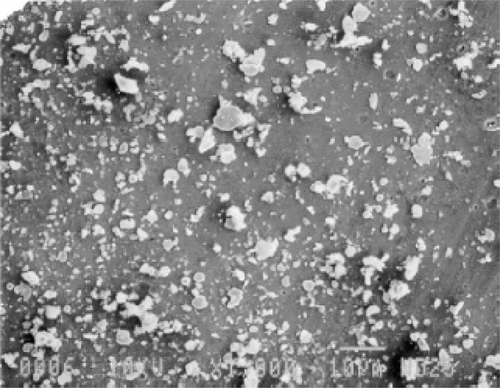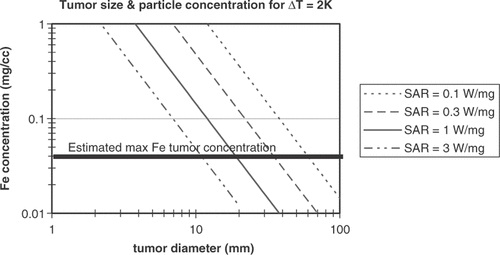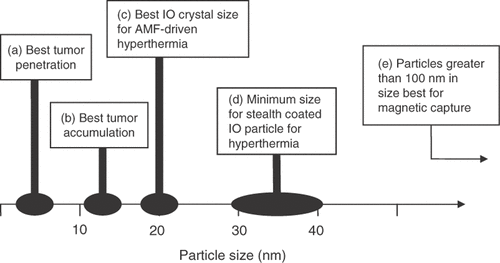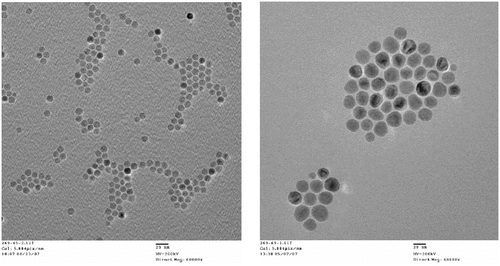Figures & data
Figure 1. Scanning electron micrograph of iron-carbon microparticles prepared by FeRx for magnetic targeting of doxorubicin and other chemotherapeutics. 300 × magnification. Reprinted with permission from Elsevier from Biomaterials 21 (2000) 1411–1420.

Figure 2. Estimates of concentration of ferrite particles needed for a give tumor diameter to raise the temperature of the tumor 2°C. Both axes are log scale. Lines are shown for particles with specific loss power of 0.1, 0.3, 1, and 3 W/mg. The line indicating the maximum levels of ferrite particle tumor concentration anticipated to be achievable after systemic (e.g. IV) administration assumes an injection of approximately 20 mg/kg Fe. For a 20 g mouse this is 0.4 mg Fe injected and the line shows a tumor accumulation of about 10% of the injected dose per cc tumor. For IO particles with a given SAR, tumors of the size indicated by the intersection at the maximum concentration line or larger may be treatable. For example, IO particles concentrated at 0.04 mg Fe/cc tumor and with an SAR of 1 W/mg may heat tumors with diameter of roughly 20 mm or larger to a therapeutically useful temperature.

Figure 3. Approximate particle sizes that appear to be best suited for (a) tumor penetration, (b) tumor accumulation, and (c) AMF-Neel relaxation-driven hyperthermia. Also shown are the size ranges for (d) making stealth IO particles for hyperthermia, and (e) particle size needed for magnetic field capture.

Figure 4. Transmission electron micrographs of iron oxide particles made by Alnis BioSciences, Inc. The smaller particle shown on the left had an average size of 10 nm, stdev 0.8 nm demonstrating the tight size control currently achievable in IO particle fabrication, while the particles on the right had an average size of 23 nm, stdev 4 m and generated about 670 W/g when subject to a 400 KHz alternating magnetic field generated using a 2 turn, 2.5 cm diameter copper coil driven by Ameritherm Hotshot 5000 power supply supplying 200 amps (estimated magnetic field amplitude of 8 kA/m).
